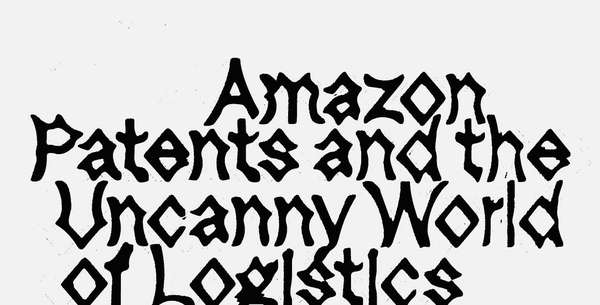Idea by
Matthew Stewart (with Jane Chew)
Call for ideas 2019
Institute of Patent Infringement
Institute of Patent Infringement

- New alliances
With the rise of digital platforms the future is today defined through a monopoly of companies; a legally sanctioned system closed off through intellectual property. Taking Amazon as a leading example, the project comprised research into the many patents filed by Amazon in some way related to automation, the body and space.These patents were organised and made available online before an open call was launched asking for proposals to reimagine them. The results were displayed in the Dutch Pavillion and subsequently took the form of a roaming patent library installation shown in the V&A and Het Nieuwe Instituut in Rotterdam.The project provides a means to visually represent and document often abstract information related to current unfolding questions surrounding automation that will impact the future of architecture. Secondly, it allowed professionals to redefine what our automated futures might look like or to critically reflect on this process taking place.
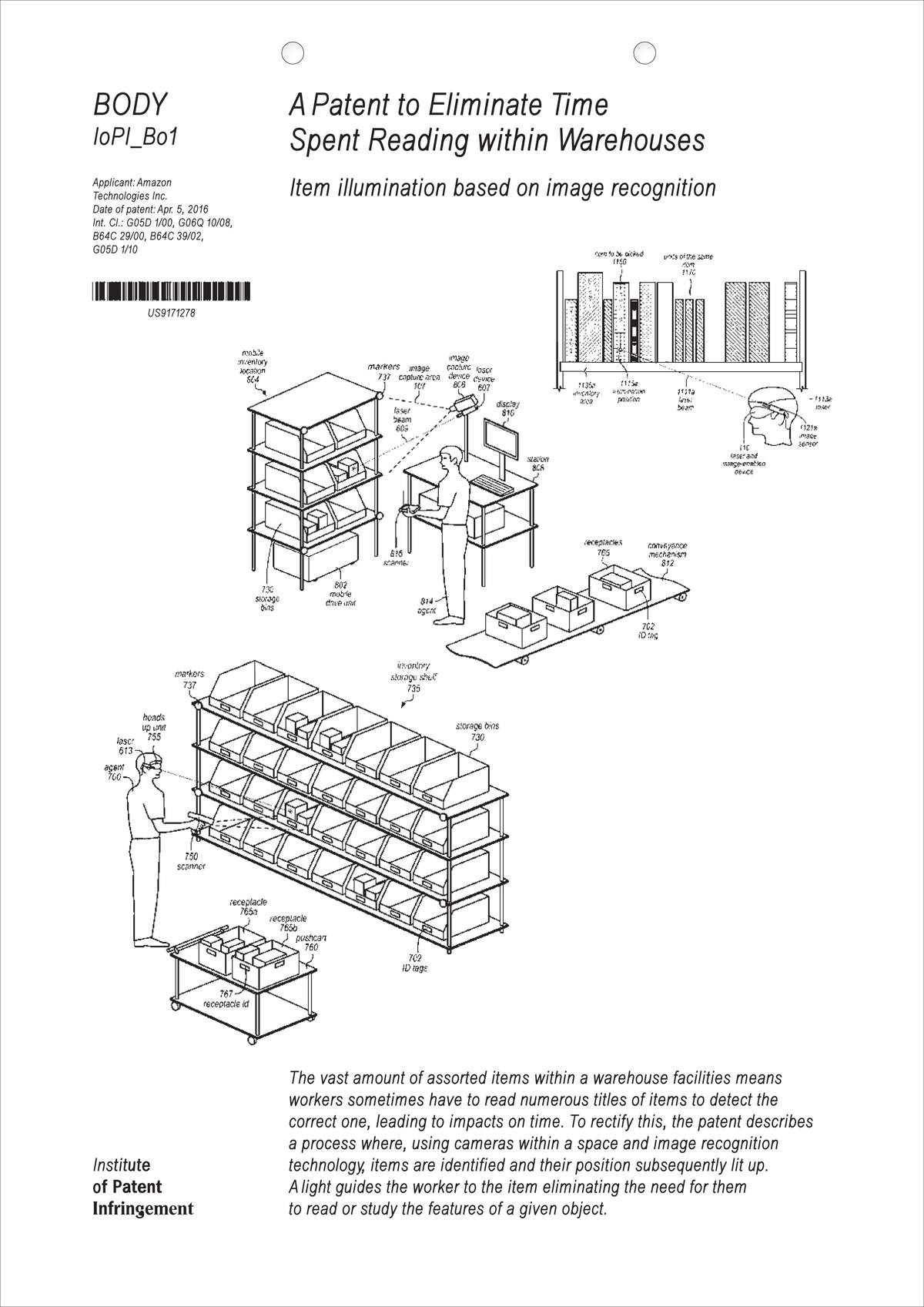
Commissioned by Het Nieuwe Instituut for the Dutch Pavillion the project firstly involved research into the thousands of patents Amazon had filed related to automation, the body and space. These patents were made available online on a website.
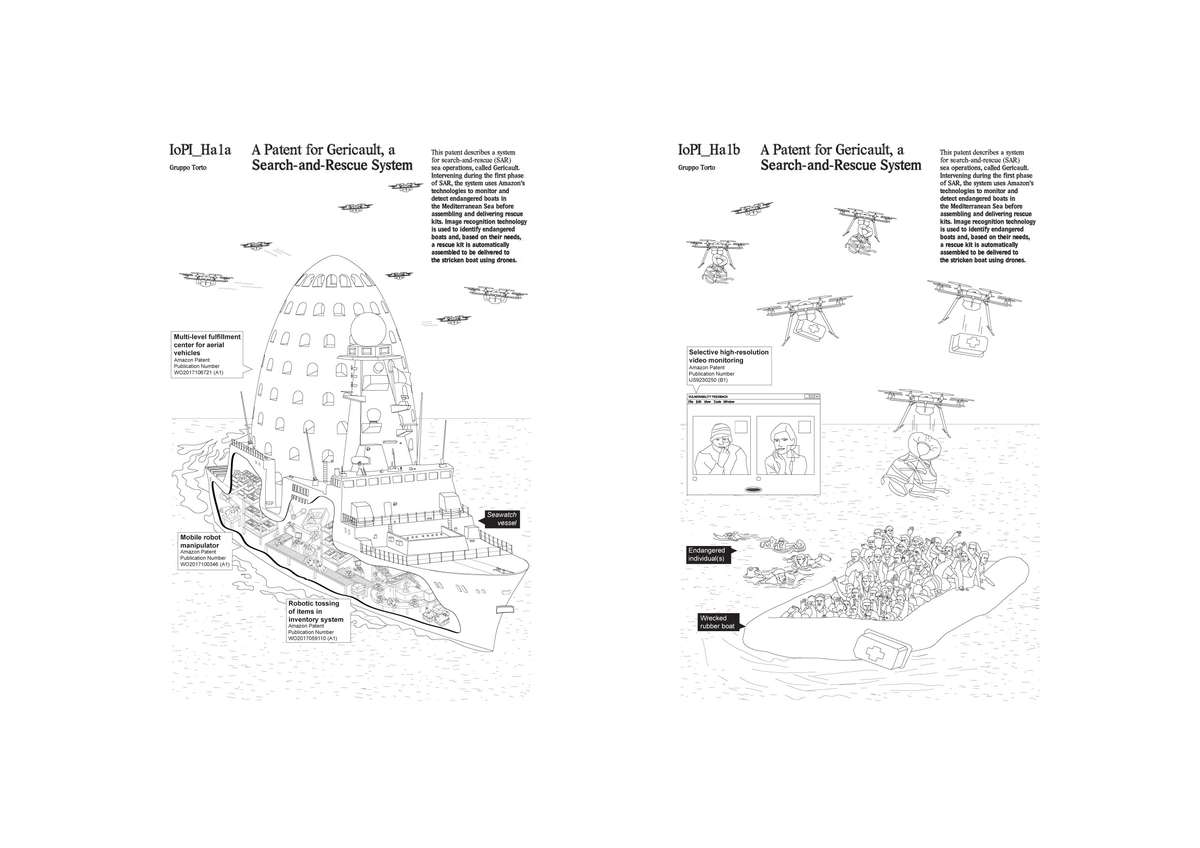
An open call was launched in which 70 entries were received with 13 selected to be displayed. This entry by Gruppo Torto looked at creating from Amazon's patents a search and rescue facility to rescue migrants in the Meditarean sea.
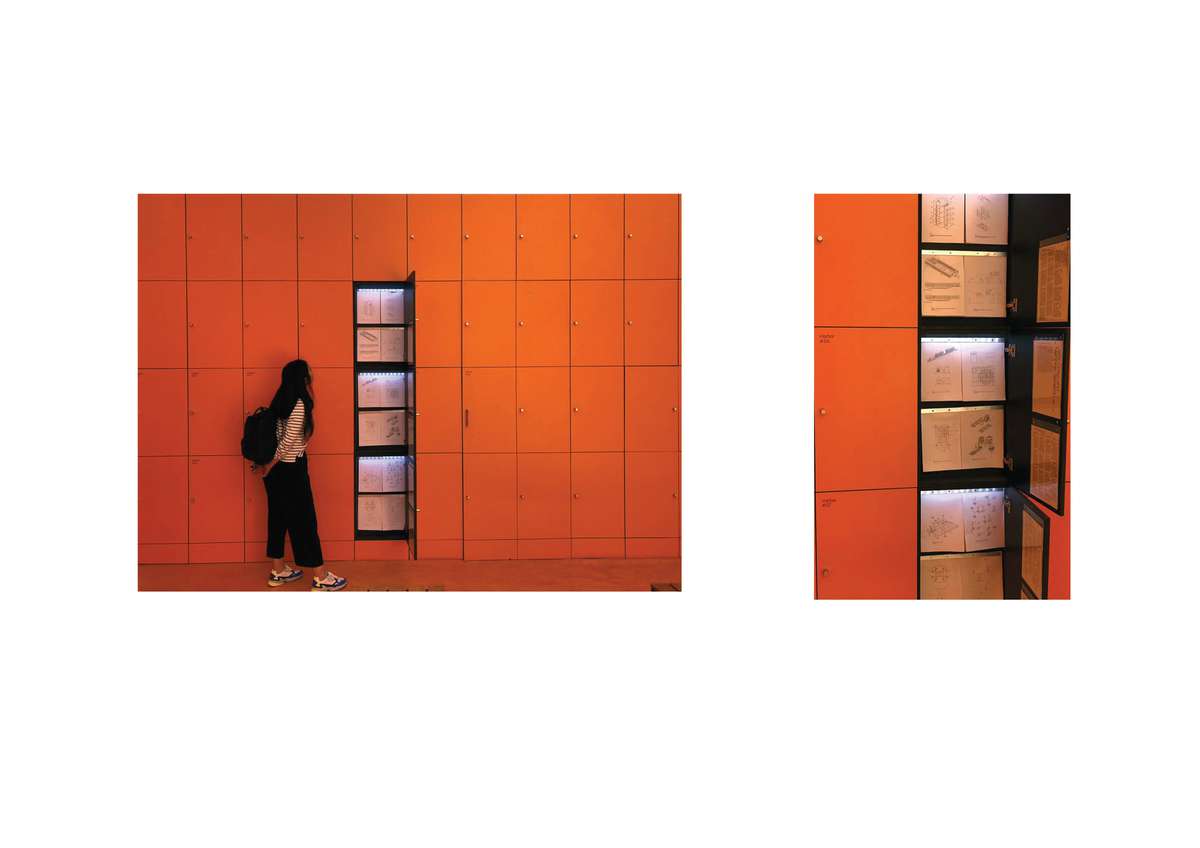
Institute of Patent Infringement's display in the Dutch Pavillion at the Venice Architecture Biennale
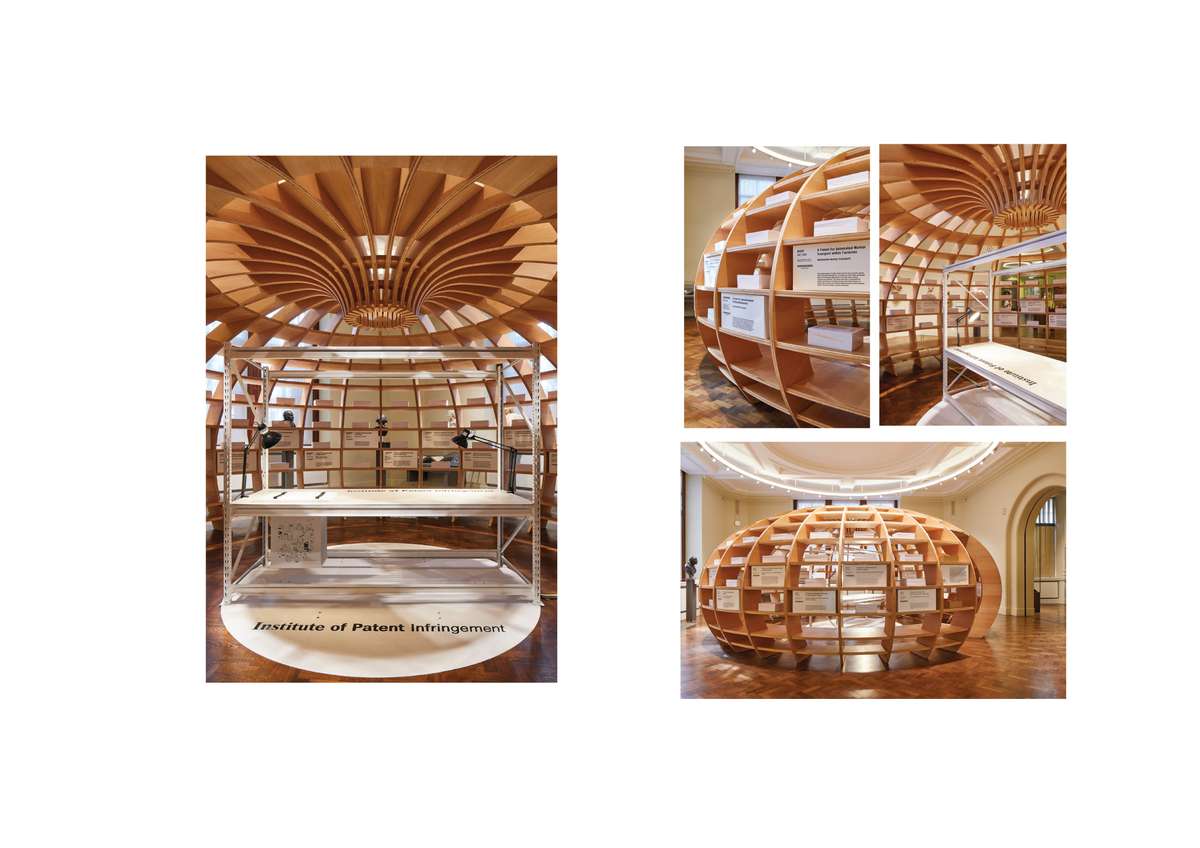
Institute of Patent Infringement installation as a hackable patent library at the V&A as part of LDF in collaboration with curator Brendan Cormier and graphic designer Jules Esteves.
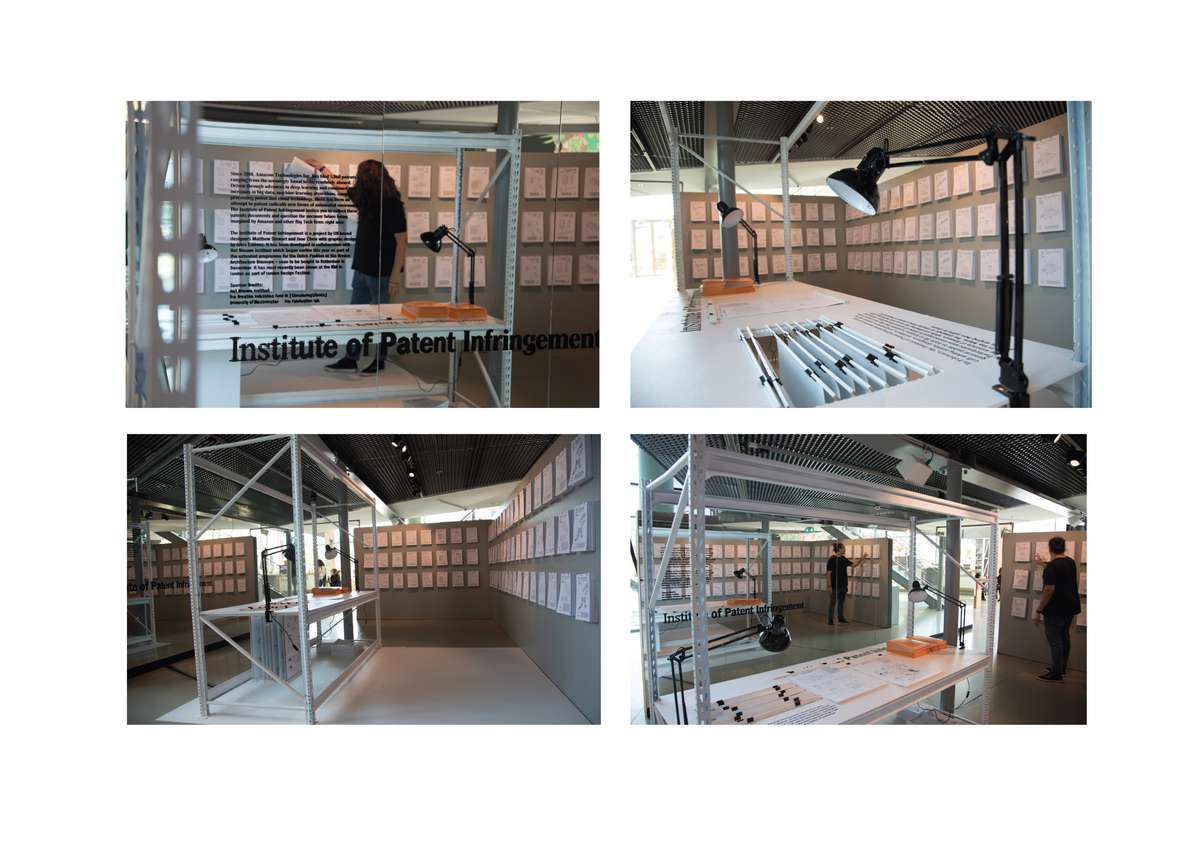
Institute of Patent Infringement installation as a hackable patent library at Het Nieuwe Instituut
Institute of Patent Infringement
Institute of Patent Infringement

- New alliances
With the rise of digital platforms the future is today defined through a monopoly of companies; a legally sanctioned system closed off through intellectual property. Taking Amazon as a leading example, the project comprised research into the many patents filed by Amazon in some way related to automation, the body and space.These patents were organised and made available online before an open call was launched asking for proposals to reimagine them. The results were displayed in the Dutch Pavillion and subsequently took the form of a roaming patent library installation shown in the V&A and Het Nieuwe Instituut in Rotterdam.The project provides a means to visually represent and document often abstract information related to current unfolding questions surrounding automation that will impact the future of architecture. Secondly, it allowed professionals to redefine what our automated futures might look like or to critically reflect on this process taking place.

Commissioned by Het Nieuwe Instituut for the Dutch Pavillion the project firstly involved research into the thousands of patents Amazon had filed related to automation, the body and space. These patents were made available online on a website.
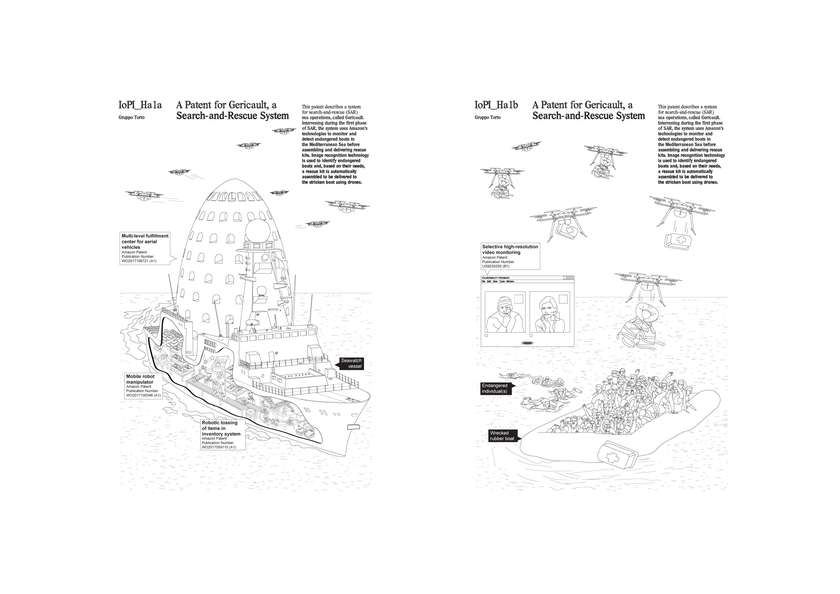
An open call was launched in which 70 entries were received with 13 selected to be displayed. This entry by Gruppo Torto looked at creating from Amazon's patents a search and rescue facility to rescue migrants in the Meditarean sea.
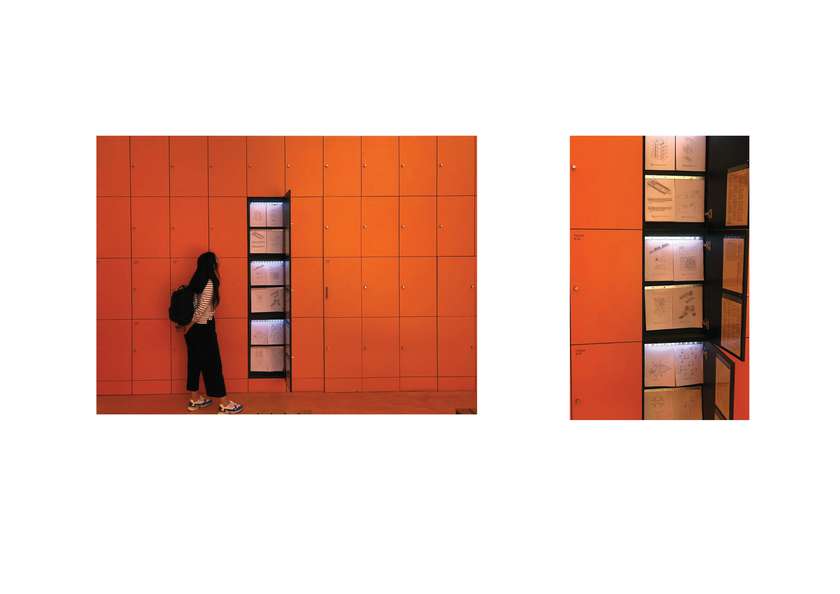
Institute of Patent Infringement's display in the Dutch Pavillion at the Venice Architecture Biennale

Institute of Patent Infringement installation as a hackable patent library at the V&A as part of LDF in collaboration with curator Brendan Cormier and graphic designer Jules Esteves.

Institute of Patent Infringement installation as a hackable patent library at Het Nieuwe Instituut
